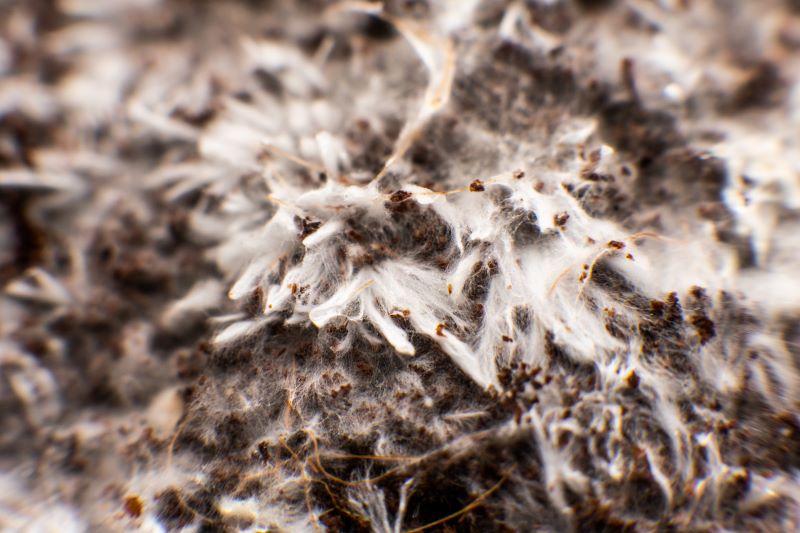Expert growers are familiar with the concept of feeding the soil first. Your greenhouse space is designed to replicate ideal growing conditions from light and hydration, to soil type and temperature. An important variable, which is sometimes underemphasized or overlooked, is establishing and “building up” beneficial biology in soil and on plant tissue surfaces. Beneficial biology that is found in nature aids in plant protection, strengthening immune responses, and nutrient uptake. Healthy natural soils are characterized by a presence of broad-spectrum microbiology, which is reflected in the living soils and amendments that we create. Experienced growers are familiar with opening a fresh bag of soil and seeing a network of white webby growths, but for novices, this can trigger some concern. Obviously, you don’t want to grow in mold… do you? Though it may look a bit concerning to the untrained eye, these growths are known as ‘fungal hyphae’ and are a sign of healthy soil.
What is Fungal Hyphae?

The term ‘fungal hyphae’ refers specifically to the long thread-like filaments that make up the body of fungi. These threads allow the broad-spectrum of fungi in your soil to break down dead plant material, process nutrients, and release nutrients. Fungi such as mycorrhizae can also form a symbiotic relationship with plants to make water and nutrients more available, as well as support stronger root development. Many people think that fungi=mushrooms, but much of the biomass of fungi actually consists of microscopic fungal life.
Living soil amendments and mixes contain a broad range of beneficial bacteria and fungi. When they’re in an ideal environment, the biology in your soil forms large colonies that you can see as growths on the soil surface. These growths come in a variety of colors, shapes, and sizes, though many are white and have a fuzzy, webby, or stringy texture.
Why is Fungi Important?

Beneficial microbiological diversity is a natural aid for cultivating vigorous, healthy, nutrient-dense plants, with elevated rates of macro, micro, phytonutrients, flavonoids, & terpenoids (terpenes). Fungi contributes to this by building symbiotic connections with the root systems of plants. The roots provide an ideal environment for fungi to establish itself. In return, the fungi acts as an extension of the plant’s root system, increasing the amount of water and nutrients that a plant can take in. This increase in available inputs allows plants to develop more nutritious produce, healthier foliage, and to increase the size and quality of the overall crop.
In addition to creating more (and better) produce, a proliferation of diverse fungal life can also increase disease resistance! Healthier plants, especially those that are well nourished, naturally have the ability to withstand disease pressures. In addition, biological diversity naturally competes against pathogens in your soil, with beneficial fungi out-competing diseases and pests for nutrients and resources. Pathogens are one of the biggest concerns of greenhouse growers. The most significant benefit of microbial inputs is that they can be used in any organic or conventional growing system, with any biologically friendly inputs.
How Do I Support the Fungi in my Soil?
There are several things you can do to support your soil fungi, from adjusting your growing techniques to changing up your fertilizers. Using organic and biologically friendly conventional inputs is an important first step. The inputs you apply should support the way that nutrients are naturally broken down and processed by microbes.
When using pesticides, especially fungicides, do not apply these to the soil. Fungicides do not differentiate between beneficial fungi or pathogenic fungi, and repeated applications of biocides can decimate the biological network in your soil.
Reducing soil disturbance, such as tilling, compaction, and erosion, allows your soil fungi to establish and build up a healthy population. Tilling can be useful in some cases for weed maintenance or building out a new growing space, but in the long run it’s most beneficial to allow your soil to develop under the surface, and to plant alongside the growing network of microbes.

Soil biodiversity is key to plant health. The more microbiological species present in your soil, the more functions to support plant success. So, the next time you ask yourself, “what’s that fuzzy stuff?” you know it’s fungal hyphae!
For questions or concerns about your soil, please reach out to our team of soil experts.



